Incheon International Airport (Korean: 인천국제공항) is located on an artificial island 48 kilometers (30 miles) west of Seoul, the capital of South Korea. It opened on March 29, 2001. It is the busiest airport in South Korea and the busiest airport in East Asia. one. It is also called Seoul-Incheon International Airport.
In 2019, the airport received 71.1 million passengers. Cargo transported 2,764,369 tons. A total of 404,104 sorties took off and landed aircraft.
The airport now mainly serves domestic destinations in Korea, and there are round-trip flights to East Asian metropolitan areas such as Tokyo, Osaka, Beijing, Hong Kong, Singapore, Shanghai and Taipei.
Together with Singapore Changi Airport and Tokyo Haneda Airport, it is rated as one of the cleanest airports in the world by Skytrax.
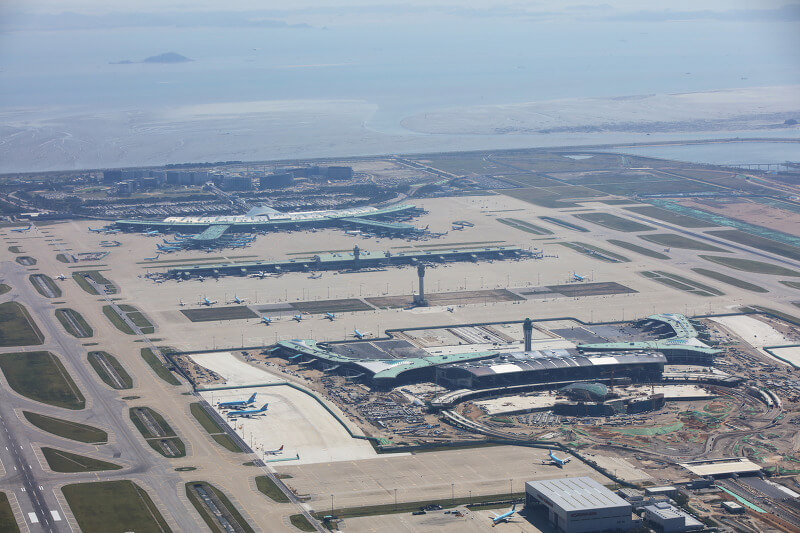
History
After the 1988 Seoul (now Seoul) Olympic Games, the number of foreign tourists in South Korea increased rapidly. The original Seoul Gimpo International Airport can no longer meet the rapidly increasing passenger flow. In the 1990s, the South Korean government decided to build a new international airport to reduce the burden on Gimpo International Airport.
The construction of Incheon International Airport is divided into 4 phases.
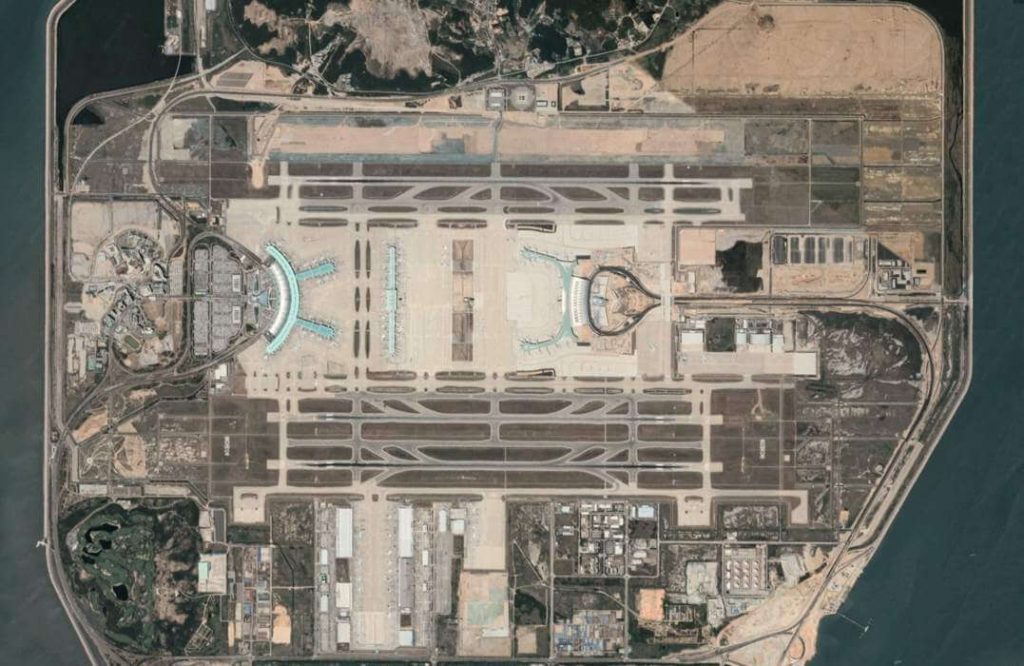
Phase 1
- In November 1992, the construction of Incheon Airport began on the reclaimed land between Yeongjong Island and Yeongyu Island, and it took 8 years to complete.
- It was originally scheduled to be completed in 1997, but it was postponed due to the economic crisis. The airport officially opened on March 21, 2001.
- The first phase of the project includes: 1 main terminal, 2 parallel runways, 1 control tower, 1 administrative building, 1 transportation center, 1 integrated operation center, 3 cargo terminals, international business center and government Office building.
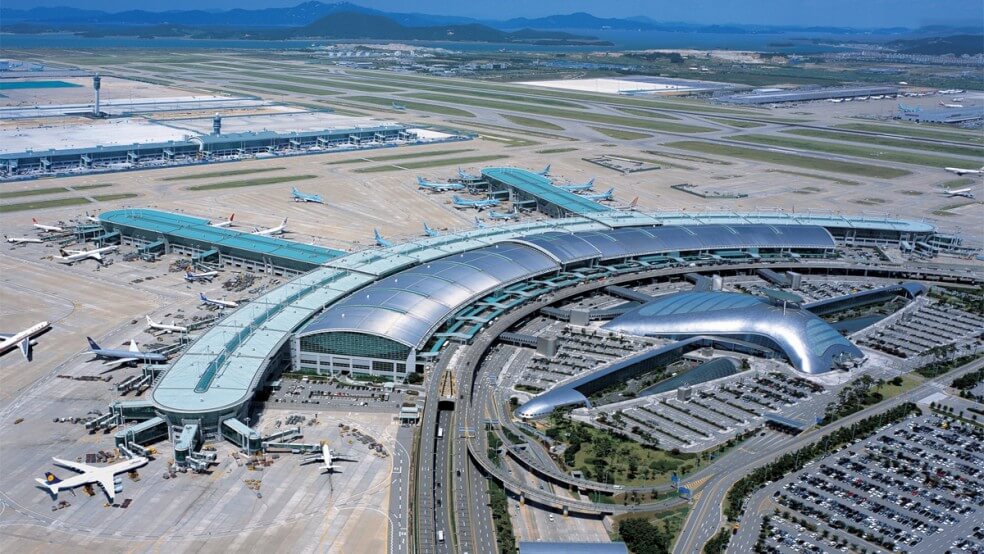
Phase 2
- In 2002, the airport began its second phase of construction, including a Concourse, a third runway, a 13-hectare cargo terminal area and so on.
- On November 15, 2006, the Airbus A380 landed at the airport during the first leg of its certified journey. Tests on runways, taxiways and ramps have shown that the airport can handle aircraft.
- On June 20, 2008, the airport Concourse was completed to serve the 2008 Beijing Olympic Games.
- On January 10, 2008, the construction plan of the airport’s Yeongjong Medical Center was approved.
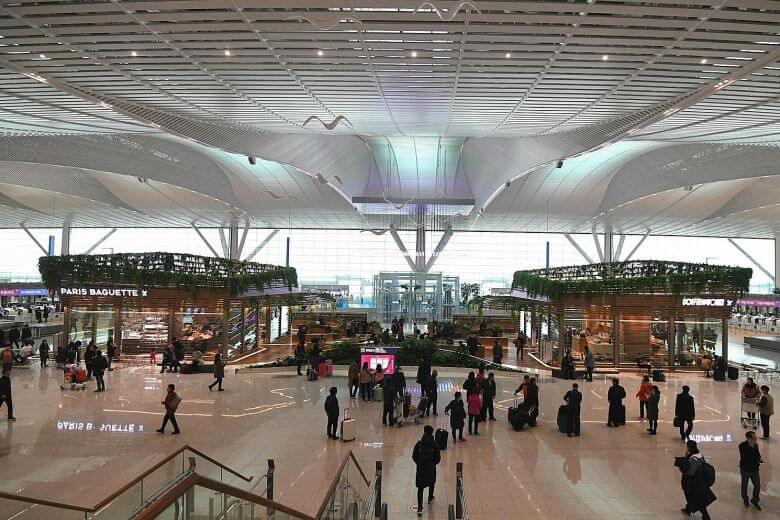
Phase 3
- In 2011, Incheon International Airport began its third phase of expansion, including a second terminal.
- In 2012, Yeongjong Medical Center was completed and officially opened. The hospital provides services to nearby residents and tourists.
- In February 2016, the maglev train at Incheon Airport opened. The first stage is 6.1 kilometers long and has 6 stations, which can quickly take passengers from the airport to the water park on the island.
- On January 18, 2018, the second terminal opened. It is located in the northern part of the airport. The terminals are connected to each other by underground “Starline” trains.
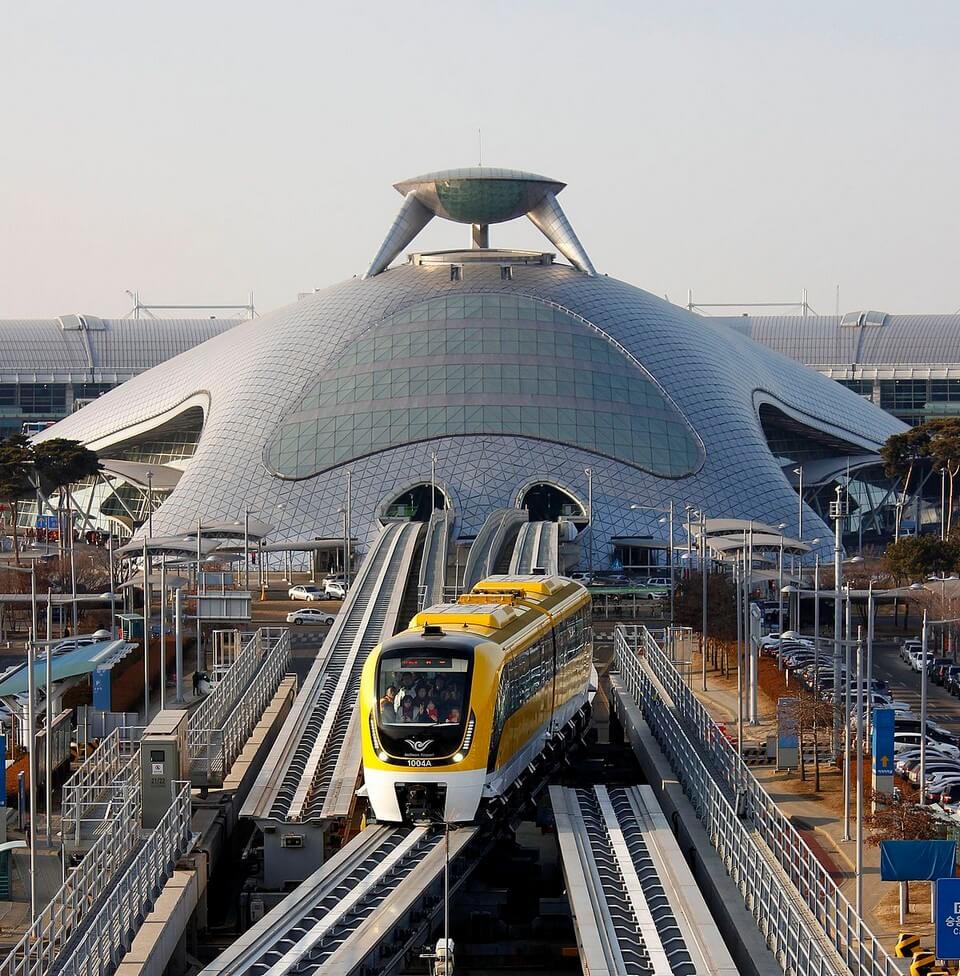
Phase 4
- The original plan was to be completed in 2020 (affected by the new crown epidemic, postponed later), this is the final and final construction stage. Upon completion, the airport will have 2 passenger terminals, 4 satellite terminals, 128 gates and five parallel runways (one dedicated to cargo flights).
Terminals
Terminal 1
Terminal 1 (covering an area of 496,000 square meters) is the largest airport terminal in South Korea. It is 1,060 meters (3,480 feet) long, 149 meters (489 feet) wide, and 33 meters (108 feet) high. Its construction cost is 1.3816 trillion won (1.2 billion US dollars).
The terminal has 44 boarding gates (which can accommodate all the boarding gates of Airbus A380), 50 customs inspection gates, 2 biological quarantine counters, 6 fixed and 14 portable passenger quarantine counters, and 120 Arrival passport control counters, 8 arrival security ports, 28 departure security ports, 252 check-in counters and 120 exit passport control counters.
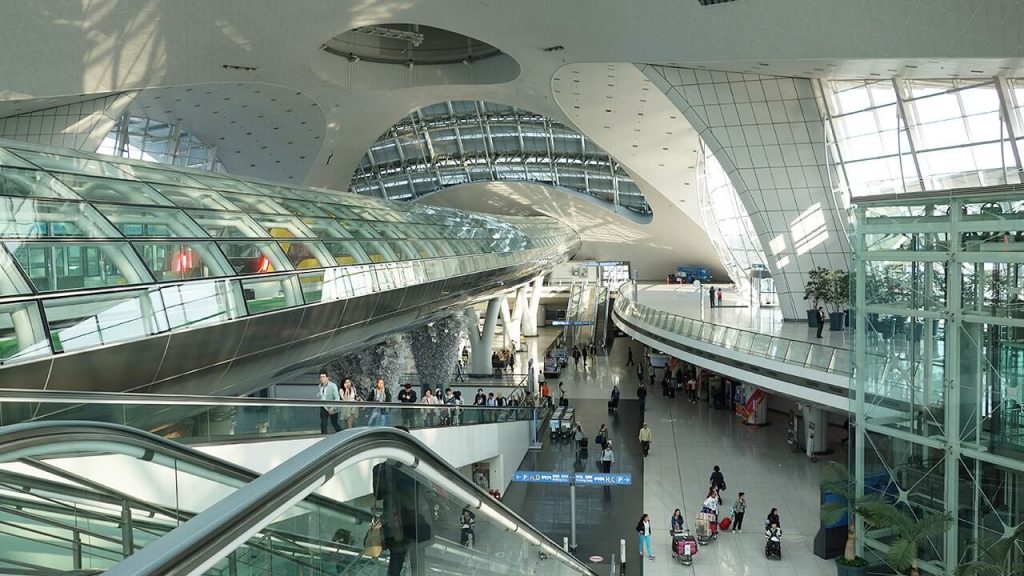
Concourse
The Concourse was completed at the end of May 2008. It is connected to IAT through two parallel 870-meter-long (2,850-feet) parallel underground passages and to Terminal 1.
It has 30 boarding gates and 6 waiting rooms.
Terminal 2
Construction of this terminal building started in 2011 and opened on January 18, 2018. It has 37 boarding gates. The terminals are connected to each other by underground “Starline” trains.
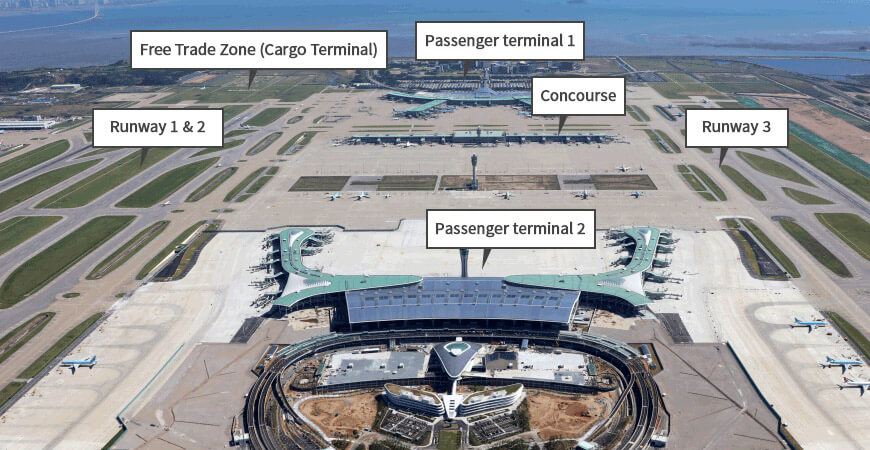
Incheon International Airport Data
- Country
- South Korea
- Region
- East Asia
- Status
- In use
- Official name
- 인천국제공항
- Other name
- Seoul-Incheon International Airport, Seoul-Incheon Airport
- Location
- Jung District, Incheon, South Korea
- Owner
- Ministry of Land, Infrastructure and Transport
- Official website
- airport.kr
- Operator
- Incheon International Airport Corporation
- Began
- Nov, 1992
- Opened
- Mar-21, 2001
- Airfield area class
- 4F
- Airport type
- Public
- Airport code
- IATA: ICNICAO: RKSIWMO: 47113
- Terminal area
- 262 acres / 1060000 m²
- Main terminal area
- 123 acres / 496000 m²
- Runway length
- 1*4,000 m, 2*3,750 m
- Passenger traffic
- 71.1 million(2019)
- Freight volume
- 2,764,369 tons (2019)
- Takeoffs and landings
- 404,104 sorties
View Incheon International Airport on Google Satellite Map
Google satellite maps allow you to see building details more clearly, including natural landscapes such as mountains, rivers, deserts, sea and man-made engineering buildings.
If you are very interested in this engineering building, it is a good idea to click below Google Map icon. We will help you jump to the corresponding location of this building or engineering on Google satellite map.





























































